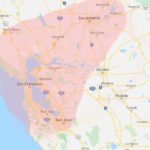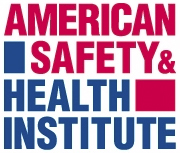
How To Stop Bleeding – Controlling And Treating
by Chris Schlesinger
In Home CPR Blog
The recommended approach for controlling bleeding is not complicated. In fact, it has has been simplified over the years. In the past, there was instruction in elevating the bleeding area and the use of pressure points. Both of those approaches have been dropped from the first aid classes of the American Red Cross and the American Heart Association.
The key thing to remember for controlling bleeding is to apply pressure to the wound.
Step-by-Step Approach for Controlling and Treating Bleeding
1) Even for a minor open wound, ideally you should be wearing disposable gloves. Gloves provide protection against body fluids.
2) Put a sterile dressing on the wound and apply pressure. The pressure needs to be firm because the pressure is going to stop the bleeding. If the bleeding is heavy and soaking through the dressing, put another sterile dressing on top of the first dressing. Do not remove the first dressing. Keep stacking sterile dressings on top of each other if blood continues to soak through.
3) After the bleeding has stopped, remove the soaked dressing and wash the wound thoroughly with water and soap. If you can, wash the wound with running water for five minutes. The purpose is to get the wound very clean, which decreases the chance of infection. However, if the wound is significant and you decide to seek medical attention, do not wash the wound. Leave the dressing in place.
4) Apply a triple antibiotic cream like Neosporin if you are not going to seek medical attention. There is no need to apply hydrogen peroxide – it’s extremely harsh on skin. Don’t be fooled into thinking hydrogen peroxide’s burning feeling is getting the wound extra clean. Neosporin will disinfect the area just as well without all the pain and damaged skin.
5) Cover the wound with either a band-aid or apply a clean sterile dressing and bandage over the dressing. This will protect the area from additional dirt and germs, as well provide protection to the scab from breaking open.
Additional Considerations for Bleeding
If you’ve come in contact with blood, clean the exposed area with soap and water. Rub the area vigorously for at least 20 seconds with soap. The friction from this rubbing will clean the area.
It can be difficult to know if a wound needs stitches. Here are few conditions that usually require stitches: the edges of the skin don’t meet; the wound is to the face; the wound is over a half inch long. If you think you or someone needs stitches, have the stitches done as soon as possible.
If an object is imbedded in the body, do not try to remove it. The object may be preventing the wound from bleeding more than it is. Let a healthcare professional remove objects like nails, glass, or pieces of wood larger than a splinter.
Puncture wounds often do not bleed much, but have a greater chance of becoming infected, so thoroughly clean the wound.
Tourniquets can be used for severe bleeding, especially bleeding you cannot stop. Choosing to use a tourniquet is a big decision since you are cutting off the blood supply to an area of the body. I recommend taking an American Heart Association first aid course, which teaches tourniquet use.
If you cannot stop the bleeding or if the wound is squirting blood, call 911 immediately.
About The Author:
Chris Schlesinger’s company In Home CPR teaches on-site safety classes at homes and businesses throughout the San Francisco Bay Area, serving Alameda, Contra Costa, Marin, Napa, Sonoma, San Mateo, Santa Clara and Solano counties. He offers certifications through the American Heart Association and American Red Cross in CPR, BLS, AED, standard first aid and pediatric first aid. Visit his websites at CPR Certification San Francisco or CPR Class San Mateo.
Copyright 2024 In Home CPR






